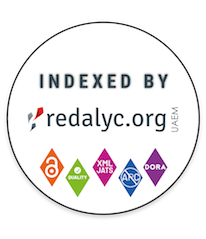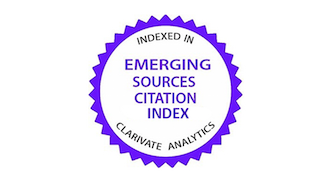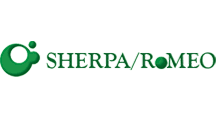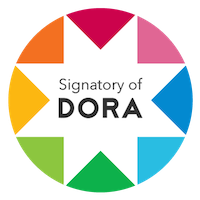Jasmonate and salicylic sprays improve cherry tomato fruit productivity and quality in unheated greenhouses
DOI:
https://doi.org/10.15517/am.2024.58254Keywords:
Solanum lycopersicum, phytohormones, plant growth, breeding, genotype, total soluble solidAbstract
Introduction. Arable regions often lack sufficient soil nutrients, which means that fertilizers must be used. However, using fertilizers excessively can harm the environment, human health and food safety. Natural growth regulators derived from plants are environmentally friendly and reasonably priced. The phytohormones methyl jasmonate (MeJA) and salicylic acid (SA) are crucial for enhancing plant biomass, quality, productivity and resistance to environmental stresses. Objective. To evaluate the foliar effect of MeJA and SA on fruit quality and production of colorful tomato cultivars under greenhouse conditions. Materials and methods. The trial was conducted at the University of Diyala, Iraq, from December 1, 2022, to June 5, 2023. Foliar applications of 0 mg/L, 200 mg/L SA and 200 mg/L MeJA were evaluated to determine their effects on fruit quality and production of colorful indeterminate cherry tomato cultivars: LA4013, LA353, LA2921, LA3899 and IQ2. A randomized complete block design was used, with each treatment having three replicates. Results. The cultivar IQ2 produced the heaviest fruit (82.13 g), the highest plant yield (4.56 kg/plant), the highest total yield (4.56 t/house) and the highest titratable acidity (0.62 %). The cultivar LA4013 had the highest fruit number (612.88 fruits/plant) and the highest total soluble solids (2.933 %). The foliar application of 200 mg/L SA resulted in the highest chlorophyll index (36.68 SPAD), the highest fruit number (373.73 fruits/plant), the highest plant yield (3.15 kg/plant) and the highest total yield (3.93 t/house). Conclusion. Considering all variables together, the best-performing genotypes were IQ2 and LA4013, which were superior to other genotypes in quality and yield trials. The foliar application of 200 mg/L SA improved both yield and quality of cherry tomatoes under greenhouse conditions.
Downloads
References
Abood, M. A., Al-Shammari, A. M. A., & Hamdi, G. J. (2019). Foliar application of tecamin max® to alleviate water deficit effects on yield and water-use efficiency (WUE) of okra. Acta Scientiarum Polonorum Hortorum Cultus, 18(2), 15–20. https://doi.org/10.24326/asphc.2019.2.2
Ali, M., & Ohri, P. (2023). Deciphering the synergistic effect of Jasmonic acid and Spermine in mitigating root-knot nematode stress in tomato plants through enhancing growth and activity of antioxidant enzymes. South African Journal of Botany, 161, 21–35. https://doi.org/10.1016/j.sajb.2023.07.063
Al-Mfargy, O. K. A., & Al-Juwari, M. S. M. (2023). Estimation of hybrid vigor for flowering and yield cherry tomato hybrids. IOP Conference Series, 1158(4), Article 042066. https://doi.org/10.1088/1755-1315/1158/4/042066
Al-Obaidi, A. R. H. H. (2022). Genetic analysis of individual hybrids the development and evaluation of triple hybrids for the tomato crop [Doctoral dissertation, University of Diyala]. ResearchGate. https://doi.org/10.13140/RG.2.2.11768.52484
Al-Shammari, A. M. A., & Hamdi, G. J. (2021). Genetic diversity analysis and DNA fingerprinting of tomato breeding lines using SSR markers. Agraarteadus, 32(1), 1–7. https://doi.org/10.15159/jas.21.13
Al-Shammari, A. M. A., & Hamdi, G. J. (2022). Effect of water deficit on the growth and yield on different genotypes of tomato in semi-arid climate condition. Agraarteadus, 33(2), 389–395. https://doi.org/10.15159/jas.22.29
Al-Shammari, A. M. A., & Hamdi, G. J. (2023). Genotype and foliar fertilization affect growth, production and accumulation of anthocyanin in red cabbage. International Journal of Vegetable Science, 29(4), 337–347. https://doi.org/10.1080/19315260.2023.2219672
AL-Surhanee, A. A. (2022). Protective role of antifusarial eco-friendly agents (Trichoderma and salicylic acid) to improve resistance performance of tomato plants. Saudi Journal of Biological Sciences, 29(4), 2933–2941. https://doi.org/10.1016/j.sjbs.2022.01.020
Altaf, M. A., Shahid, R., Ren, M.-X., Naz, S., Altaf, M. M., Khan, L. U., Tiwari, R. K., Lal, M. K., Shahid, M. A., Kumar, R., Nawaz, M. A., Jahan, M. S., Jan, B. L., & Ahmad, P. (2022). Melatonin improves drought stress tolerance of tomato by modulating plant growth, root architecture, photosynthesis, and antioxidant defense system. Antioxidants, 11(2), Article 309. https://doi.org/10.3390/antiox11020309
Alwan, O. K., Al-Zuhairy, N. S. A., & Badri, A. N. (2023). Estimation of some genetic parameters and field evaluation for pure lines of cherry tomato. IOP Conference Series, 1252(1), Article 012096. https://doi.org/10.1088/1755-1315/1252/1/012096
Alwan, O. K., Hamdi, G. J., & Maleh, R. A. (2023). Methyl jasmonate and type of fertilization affect growth, production and accumulation of sulforaphane in black radish taproot. International Journal of Vegetable Science, 29(2), 178–194. https://doi.org/10.1080/19315260.2023.2170302
Alwan, O. K., & Mohammed, M. S. (2023). Study of combining ability analysis in cherry tomato (Solanum lycopersicum var. cerasiforme). Diyala Agricultural Sciences Journal, 15(1), 49–55. https://doi.org/10.52951/dasj.23150106
Arshad, A., Mushtaq, N., Sajjad, M., Ahad, A., Ilyas, M., & Gul, A. (2023). Role of exogenous phytohormones in mitigating stress in plants. In M. Ozturk, R. A. Bhat, M. Ashraf, F. M. P. Tonelli, B. T. Unal, & G. H. Dar (Eds.), Phytohormones and Stress Responsive Secondary Metabolites (pp. 111–131). Elsevier. https://doi.org/10.1016/B978-0-323-91883-1.00020-6
Bader, B. R., Abood, M. A., Aldulaimy, S. E. H., Al-Mehmdya, S. M. H., & Hamdi, G. J. (2020). Effect of water deficit and foliar application of amino acids on growth and yield of eggplant irrigated by two drip systems under greenhouse conditions. Agraarteadus, 31(2), 131–138. https://doi.org/10.15159/jas.20.20
Baek, M. W., Choi, H. R., Yun Jae, L., Kang, H. M., Lee, O. H., Jeong, C. S., & Tilahun, S. (2021). Preharvest treatment of methyl jasmonate and salicylic acid increase the yield, antioxidant activity and GABA content of tomato. Agronomy, 11(11), Article 2293. https://doi.org/10.3390/agronomy11112293
Baninaiem, E., Mirzaaliandastjerdi, A. M., Rastegar, S., & Abbaszade, K. H. (2016). Effect of pre- and postharvest salicylic acid treatment on quality characteristics of tomato during cold storage. Advances in Horticultural Science, 30(3), 183–192. http://dx.doi.org/10.13128/ahs-20281
Borysiuk, K., Ostaszewska-Bugajska, M., Kryzheuskaya, K. Gardeström, P., & Bożena Szal, B. (2022). Glyoxalase I activity affects Arabidopsis sensitivity to ammonium nutrition. Plant Cell Reports, 41(12), 2393–2413. https://doi.org/10.1007/s00299-022-02931-5
Chakma, R., Biswas, A., Saekong, P., Ullah, H., & Datta, A. (2021). Foliar application and seed priming of salicylic acid affect growth, fruit yield, and quality of grape tomato under drought stress. Scientia Horticulturae, 280, Article 109904. https://doi.org/10.1016/j.scienta.2021.109904
Chen, R. Y., Jiang, W., Fu, S. F., & Chou, J. Y. (2022). Screening, evaluation, and selection of yeasts with high ammonia production ability under nitrogen free condition from the cherry tomato (Lycopersicon esculentum var. cerasiforme) rhizosphere as a potential bio-fertilizer. Rhizosphere, 23, Article 100580. https://doi.org/10.1016/j.rhisph.2022.100580
Davies, P. J. (1995). The plant hormones: their nature, occurrence, and functions. In P. J. Davies (Ed.), Plant hormones: physiology, biochemistry and molecular biology (pp. 1–12). Springer. https://doi.org/10.1007/978-94-011-0473-9_1
Ding, F., Wang, C., Xu, N., Wang, M., & Zhang, S. (2021). Jasmonic acid-regulated putrescine biosynthesis attenuates cold-induced oxidative stress in tomato plants. Scientia Horticulturae, 288, Article 110373. https://doi.org/10.1016/j.scienta.2021.110373
Environmental Protection Agency. (2013). Methyl jasmonate; exemption from the requirement of a tolerance. Federal Register, 78, 22789–22794.
Fan, S., Wu, H., Gong, H., & Guo, J. (2022). The salicylic acid mediates selenium-induced tolerance to drought stress in tomato plants. Scientia Horticulturae, 300, Article 111092. https://doi.org/10.1016/j.scienta.2022.111092
Farooq, M., Wahid, A., Kobayashi, N. S. M. A., Fujita, D. B. S. M. A., & Basra, S. M. A. (2009). Plant drought stress: effects, mechanisms and management. Agronomy for Sustainable Development, 29, 153–188. https://doi.org/10.1051/agro:2008021
García-Caparrós, P., De Filippis, L., Gul, A., Hasanuzzaman, M., Ozturk, M., Altay, V., & Lao, M. T. (2021). Oxidative stress and antioxidant metabolism under adverse environmental conditions: a review. The Botanical Review, 87, 421–466. https://doi.org/10.1007/s12229-020-09231-1
Gerszberg, A. & Hnatuszko-Konka, K. (2017). Tomato tolerance to abiotic stress: a review of most often engineered target sequences. Plant Growth Regulation, 83(2), 175–198. https://doi.org/10.1007/s10725-017-0251-x
Godoy, A. J. V., Grisales, S. O., Cabrera, F. A. V., Villareal, M. D. C. S., Guzmán, D. G. G., & Villareal, F. A. S. (2022). Agronomic evaluation of chonto tomato (Solanum lycopersicum Mill.) lines of determinate growth. Agronomía Colombiana, 40(3), 336–43. https://doi.org/10.15446/agron.colomb.v40n3.103518
Haidar, A. (2022). Evaluation of various tomato cultivars for some physiochemical characteristics influencing flavor and nutritive properties. ProEnvironment Promediu, 15(50), 264–277.
Hamdi, G. J. (2017). Effect of perlite in reducing water stress for three genotypes of tomato [Master’s thesis, University of Diyala]. RGnowledge. https://www.researchgate.net/publication/323142482_Effect_of_perlite_in_reducing_water_stress_for_three_genotypes_of_tomato
Hamdi, G. J. (2022). Estimate the genetic distance and genetic parameters of growth characteristics and yield of tomato using half diallel cross under water stress [Doctoral dissertation, University of Diyala]. RGnowledge. https://doi.org/10.13140/RG.2.2.15131.75049
Kaya, C., Ugurlar, F., Ashraf, M., Alyemeni, M. N., & Ahmad, P. (2023). Exploring the synergistic effects of melatonin and salicylic acid in enhancing drought stress tolerance in tomato plants through fine-tuning oxidative-nitrosative processes and methylglyoxal metabolism. Scientia Horticulturae, 321, Article 112368. https://doi.org/10.1016/j.scienta.2023.112368
Khalloufi, M., Martínez-Andújar, C., Lachaâl, M., Karray-Bouraoui, N., Pérez-Alfocea, F., & Alfonso-Albacete, A. (2017). The interaction between foliar GA3 application and arbuscular mycorrhizal fungi inoculation improves growth in salinized tomato (Solanum lycopersicum L.) plants by modifying the hormonal balance. Journal of Plant Physiology, 214, 134–144. https://doi.org/10.1016/j.jplph.2017.04.012
Li, S., Huan, C., Liu, Y., Zheng, X., & Bi, Y. (2022). Melatonin induces improved protection against Botrytis cinerea in cherry tomato fruit by activating salicylic acid signaling pathway. Scientia Horticulturae, 304, Article 111299. https://doi.org/10.1016/j.scienta.2022.111299
Mahmood, A. K., Sulaiman, S. M., & Arkwazee, H. A. H. (2021). Evaluation of yield and fruit quality of newly introduced cherry tomato cultivars under high tunnel conditions. Euphrates Journal of Agriculture Science, 13(4), 35–45.
Manan, A., Ayyub, C. M., Pervez, A., & Ahmad, R. (2016). Methyl jasmonate brings about resistance against salinity stressed tomato plants by altering biochemical and physiological processes. Pakistan Journal of Agricultural Sciences, 53(1), 35–41. https://doi.org/10.21162/PAKJAS/16.4441
Melo, M. F. (2022). Effect of salicylic and jasmonic acid on cherry tomato growth, physiology, and fruit quality under saline stress [Unpublished doctoral dissertation, Universidade Federal Rural do Semi-Árido].
Mohamed, R. A., Abdelbaset, A. K., & Abd-Elkader, D. Y. (2017). Salicylic acid effects on growth, yield, and fruit quality of strawberry cultivars. Journal of Medicinally Active Plants, 6(2), 1–11.
Omar, D. G., AL-Mafargy, O. K., & Mohammed, H. A. (2020). Effect of spraying salicylic acid and zinc element on cherry tomato Solanum lycopericum L. characteristics under greenhouse conditions. Syrian Journal of Agricultural Research, 7(4), 1–12.
Ostrowska, A., Gawliński, S., & Szczubiałka, Z. (1991). Methods of analysis and assessment of soil and plant properties. A catalogue. Institute of Environmental Protection-National Research Institute.
Özden, E., & Kulak, M. (2023). Salicylic acid biosynthesis for hormone crosstalk and plant development. In A. Husen, & W. Zhang (Eds.), Hormonal cross-talk, plant defense and development (pp. 61–74). Elsevier. https://doi.org/10.1016/B978-0-323-95375-7.00006-9
Ozturk, M., & Unal, B. T. (Eds.). (2023). Exogenous application of phytohormones and phytometabolites to plants to alleviate the effects of drought stress. In M. Ozturk, R. A. Bhat, M. Ashraf, F. M. P. Tonelli, B. T. Unal, & G. H. Dar (Eds.), Phytohormones and stress responsive secondary metabolites (pp. 1–12). Elsevier. https://doi.org/10.1016/B978-0-323-91883-1.00001-2
Pascual, L. S., Mittler, R., Sinha, R., Peláez-Vico, M. A., López-Climent, M. F., Vives-Peris, V., Gómez-Cadenas, A., & Zandalinas, S. I. (2023). Jasmonic acid is required for tomato acclimation to multifactorial stress combination. Environmental and Experimental Botany, 213, Article 105425. https://doi.org/10.1016/j.envexpbot.2023.105425
Qadir, A., Anjum, M. A., Nawaz, A., Ejaz, S., Altaf, M. A., Shahid, R., & Hassan, A. (2019). Growth of cherry tomato in response to salicylic acid and glycinebetaine under water stress condition. Middle East Journal of Agriculture Research, 8(3), 762–775.
Qin, C., Lian, H., Alqahtani, F. M., & Ahanger, M. A. (2024). Chromium mediated damaging effects on growth, nitrogen metabolism and chlorophyll synthesis in tomato can be alleviated by foliar application of melatonin and jasmonic acid priming. Scientia Horticulturae, 323, Article 112494. https://doi.org/10.1016/j.scienta.2023.112494
Ranganna, S. (1977). Manual of analysis fruits and vegetables. Tata-McGraw Hill.
Raza, A., Charagh, S., Najafi-Kakavand, S., Abbas, S., Shoaib, Y., Anwar, S., Sharifi, S., Lu, G., & Siddique, K. H. (2023). Role of phytohormones in regulating cold stress tolerance: physiological and molecular approaches for developing cold-smart crop plants. Plant Stress, 8, Article 100152. https://doi.org/10.1016/j.stress.2023.100152
Salman, A. D., & Sadik, S. (2016). Influerce of foliar application of agrosol and enraizal on the qualitative characters of the fruits of cherry tomato grown under open field and plastic house conditions. Iraqi Journal of Agricultural Sciences, 47(2), 495–505. https://doi.org/10.36103/ijas.v47i2.594
Sarinana-Aldaco, O., Sanchez-Chavez, E., Fortis-Hernandez, M., González-Fuentes, J. A., Moreno-Resendez, A., Rojas-Duarte, A., & Preciado-Rangel, P. (2020). Improvement of the nutraceutical quality and yield of tomato by application of salicylic acid. Notulae Botanicae Horti Agrobotanici Cluj-Napoca, 48(2), 882–892. https://doi.org/10.15835/nbha48211914
Silva, A. A. R., Lima, G. S., Azevedo, C. A. V., Veloso, L. L. S. A., Lacerda, C. N., Gheyi, H. R., Pereira, W. E., Silva, V. R., & Soares, L. A. A. (2022). Methods of application of salicylic acid as attenuator of salt stress in cherry tomato. Brazilian Journal of Biology, 82, Article e265069. https://doi.org/10.1590/1519-6984.265069
Simonne, A. H., Fuzeré, J. M., Simonne, E., Hochmuth, R. C., & Marshall, M. R. (2007). Effects of nitrogen rates on chemical composition of yellow grape tomato grown in a subtropical climate. Journal of Plant Nutrition, 30(6), 927–935. https://doi.org/10.1080/15226510701375465
Simonne, E., Hochmuth, R., Hochmuth, G., & Studstill, D. W. (2008). Development of a nitrogen fertigation program for grape tomato. Journal of Plant Nutrition, 31(12), 2145–2154. https://doi.org/10.1080/01904160802460102
Singhal, P., Jan, A. T., Azam, M., & Haq, Q. M. R. (2016). Plant abiotic stress: a prospective strategy of exploiting promoters as alternative to overcome the escalating burden. Frontiers in Life Science, 9, 52–63. https://doi.org/10.1080/21553769.2015.1077478
Tokas, J., Kumar, N., Punia, H., Dhankar, S. K., Yashveer, S., Singal, H. R., & Sheokand, R. N. (2023). Response of antioxidant system to postharvest salicylic acid treatment in tomato (Solanum lycopersicum L.) fruit stored at ambient temperature. Journal of Agricultural Science and Technology, 25(1), 155–169. https://doi.org/10.52547/jast.25.1.155
Tonelli, F. M. P., Tonelli, F. C. P., & Lemos, M. S. (2023). Exogenous application of phytohormones to increase plant performance under stress. In M. Ozturk, R. A. Bhat, M. Ashraf, F. M. P. Tonelli, B. T. Unal, & G. H. Dar (Eds.), Phytohormones and Stress Responsive Secondary Metabolites (pp. 275–285). Elsevier. https://doi.org/10.1016/B978-0-323-91883-1.00004-8
Ullah, A., Ali, S., & Shah, S. M. (2019). Influence of foliar application of bio-stimulants on growth, yield and chemical composition of tomato. International Journal of Biosciences, 14, 309–316. http://dx.doi.org/10.12692/ijb/14.1.309-316
Wang, M., Zhang, S., & Ding, F. (2020). Melatonin mitigates chilling-induced oxidative stress and photosynthesis inhibition in tomato plants. Antioxidants, 9(3), Article 218. https://doi.org/10.3390/antiox9030218
Wang, P., Sun, S., Liu, K., Peng, R., Li, N., Hu, B., Wang, L., Wang, H., Afzal, A. J., & Geng, X. (2022). Physiological and transcriptomic analyses revealed gene networks involved in heightened resistance against tomato yellow leaf curl virus infection in salicylic acid and jasmonic acid treated tomato plants. Frontiers in Microbiology, 13, Article 970139. https://doi.org/10.3389/fmicb.2022.970139
Yu, G. B., Chen, R. N., Chen, Q. S., Chen, F. Q., Liu, H. L., Ren, C. Y., Zhang, Y. X., Yang, F. J., & Wei, J. P. (2022). Jasmonic acid promotes glutathione assisted degradation of chlorothalonil during tomato growth. Ecotoxicology and Environmental Safety, 233, Article 113296. https://doi.org/10.1016/j.ecoenv.2022.113296
Zhang, C., & Huang, Z. (2013). Effects of endogenous abscisic acid, jasmonic acid, polyamines, and polyamine oxidase activity in tomato seedlings under drought stress. Scientia Horticulturae, 159, 172–177. https://doi.org/10.1016/j.scienta.2013.05.013
Zhu, J. K. (2016). Abiotic stress signaling and responses in plants. Cell, 167(2), 313–324. https://doi.org/10.1016/j.cell.2016.08.029

Additional Files
Published
How to Cite
Issue
Section
License
Copyright (c) 2024 Bassim Almass Essa, Othman Khalid Alwan

This work is licensed under a Creative Commons Attribution-NonCommercial-NoDerivatives 4.0 International License.
1. Proposed policy for open access journals
Authors who publish in this journal accept the following conditions:
a. Authors retain the copyright and assign to the journal the right to the first publication, with the work registered under the attribution, non-commercial and no-derivative license from Creative Commons, which allows third parties to use what has been published as long as they mention the authorship of the work and upon first publication in this journal, the work may not be used for commercial purposes and the publications may not be used to remix, transform or create another work.
b. Authors may enter into additional independent contractual arrangements for the non-exclusive distribution of the version of the article published in this journal (e.g., including it in an institutional repository or publishing it in a book) provided that they clearly indicate that the work was first published in this journal.
c. Authors are permitted and encouraged to publish their work on the Internet (e.g. on institutional or personal pages) before and during the review and publication process, as it may lead to productive exchanges and faster and wider dissemination of published work (see The Effect of Open Access).



























